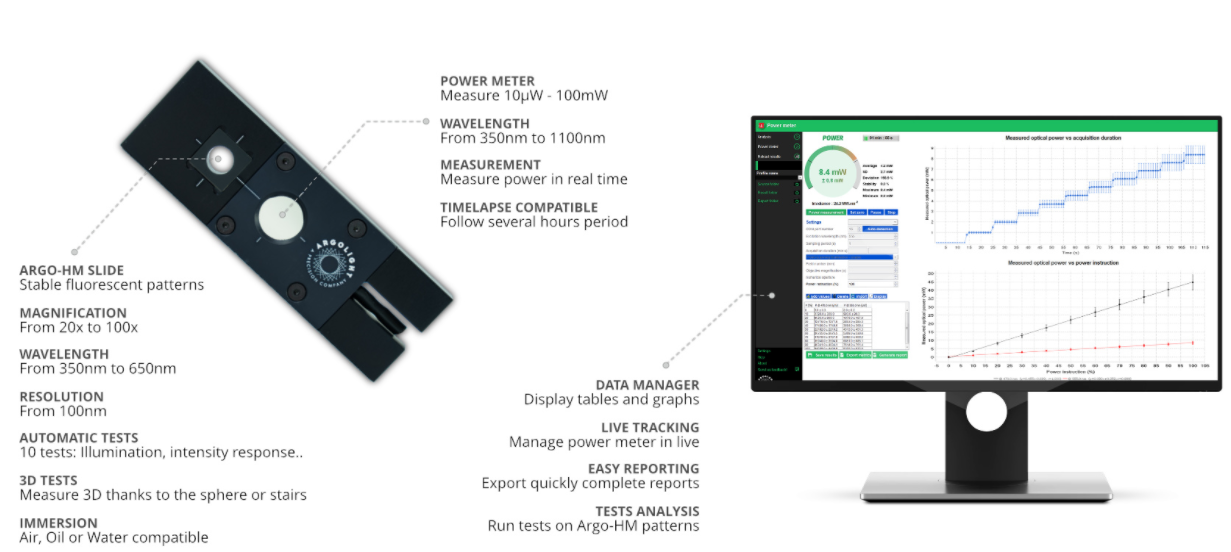In April 2019, Argolight launched the Argo-POWERHM, a slide-format power-meter that comes with an Argolight glass with the Argo-HM patterns.
Since then, many users sent requests to create customs products of the same format but with other types of patterns. With the release of the new V2 generation, Argolight presents a new series of power-meters devices with Argo-LM and Argo-SIM glass cores.
1. What’s new?
The first generation of Argo-POWER included an optical power meter, an Argo-HM patterned glass and Daybook, a dedicated image analysis software.

Argo-HM patterns of 1st generation (click to enlarge)
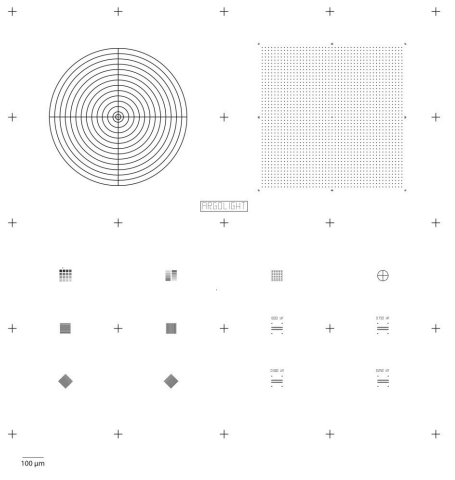
Argo-HM patterns of 2nd generation (click to enlarge)
The new series of Argo-POWER is now available with the last generation of Argolight glass, AG03. It is specifically designed to exhibit at least 100 % more fluorescence (read article here). It comes with the choice of Argo-HM, Argo-LM, or Argo-SIM patterns. You can now choose between Argo-POWERHM, Argo-POWERLM, and Argo-POWERSIM.
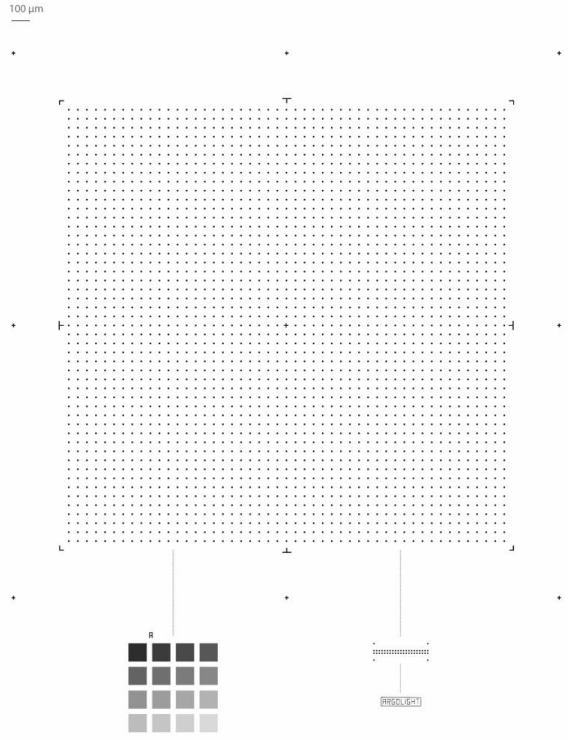
Argo-LM patterns of 2nd generation (click to enlarge)

Argo-SIM patterns of 2nd generation (click to enlarge)
2. Why use a power meter and a calibration slide?
Combining a calibrated optical power meter with the best of Argolight technology opens the path to complete, yet quick and easy, quality control of fluorescence-based imaging systems. Simply put, you now only need a single device, instead of multiple ones in the past.
With the glass core, it is perfect to discriminate if the issue comes from the sample or the microscope. Then, if it comes from the microscope, the power meter is used to troubleshoot both illumination and detection paths, so as to detect the source of an intensity response issue.
It can be used to troubleshoot the whole illumination and detection paths, so as to detect the source of an intensity response issue, for those who want to discriminate if the issue is with the sample or the microscope.
Read our application note
“How to troubleshoot an intensity response issue”
With Argo-POWER devices, you get 3 tools in one:
- The optical power meter is designed to measure the optical power of laser light or other monochromatic or near monochromatic light sources at the sample plane in microscopy setups. This is important when one wants to perform quantitative microscopy (recording and recreating experimental conditions) and/or identify fluctuations of light sources power, drops in filters transmission, fiber coupling misalignment, etc.
- The Argolight patterned glass is a special glass substrate with different fluorescent patterns embedded inside. This glass is designed to quality-control many aspects of a fluorescence microscope: field uniformity, field distortion, lateral co-registration accuracy, lateral resolution, system intensity and spectral responses, stage repositioning repeatability, accuracy of 3D reconstruction, etc.
- Daybook software is used both with the optical power meter and the patterned glass:
-
- With the power meter: visualize in real-time on your computer the measured illumination power, run timelapse measurements to detect power fluctuations, and quantify the power of your light source at different percentages.
- With the pattern glass: analyze and extract data (maps, graphs, and metrics) from images of the patterns, in order to control significant parameters of your fluorescence imaging system.
Features of the 1st Argo-POWERHM device
Easier to navigate within patterns
The patterns of the 2nd generation of slides keep the best features of the 1st generation. But some patterns have been improved to ease the exploration of the slide or the image acquisition.
The three standard models – Argo-HM, Argo-SIM, and Argo-LM, display some changes, which can be found in the user guides here. See below what has changed in the most commonly used slide, the Argo-HM.
Target pattern
This is the pattern at the center of the slide. Its size and position make it the reference pattern to ensure the slide is centered in the middle of the field of view.
In the 1st generation, the target pattern consisted of concentric circles with increasing radii from 25 μm to 300 μm with a step of 25 μm, plus an extra circle with a radius of 12.5 μm, featuring a target.
On the 2nd generation, it goes up to 325 µm.
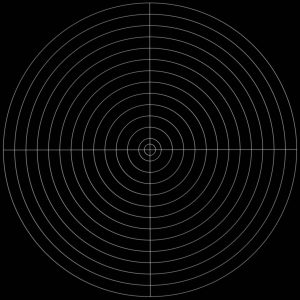
Target pattern – Argo-POWER HM
They are located at the edge of the slide, to limit the exploration perimeter in which to find the patterns of interest. They were 20 µm in the 1st generation and now 40 µm in the 2nd generation.

Repositioning crosses pattern – Argo-POWER HM
It now fits the field of view of a large chip camera for 20x magnification.
In the 1st generation, the FOR pattern consisted of a matrix of 39×39 rings, separated by 15 μm, on a total field of 570 μm × 570 μm. In the 2nd generation, there are 45×45 rings, separated by 15 μm, on a total field of 660 μm × 660 μm.

Field of rings pattern – Argo-POWER HM
The Argo-HM and Argo-SIM slides both present the 3D crossing stairs pattern. This pattern consists of twice 11 empty cylinders embedded at different depths, like two crossing stairs going down in Z, surrounded by four pillars.
In the Argo-HM, there are four 3D crossing stairs in the slide, with varying steps: 1 μm, 0.75 μm, 0.5 μm, and 0.25 μm. To make it easier to know the step of the stairs, the step value is now engraved just above the pattern itself.

One of the 3D crossing stairs pattern
Argo-POWER HM
4. Design of the slide
Based on the feedback received from Argolight’s customers on usability, the slide design itself has been improved.
Glass shape
The glass insert is now round shaped, while it was square on the 1st generation. The round shape makes it easier to clean as oil do not get into the blind holes.
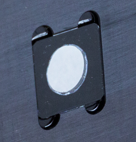
Glass insert – 1st generation
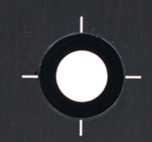
Glass insert – 2nd generation
Instructions for slide positionning
Positioning instructions have been engraved on both sides: it’s now clearer to know which side to put up either on upright or inverted microscopes. It reduces mistakes – straight to the point, even at first use.
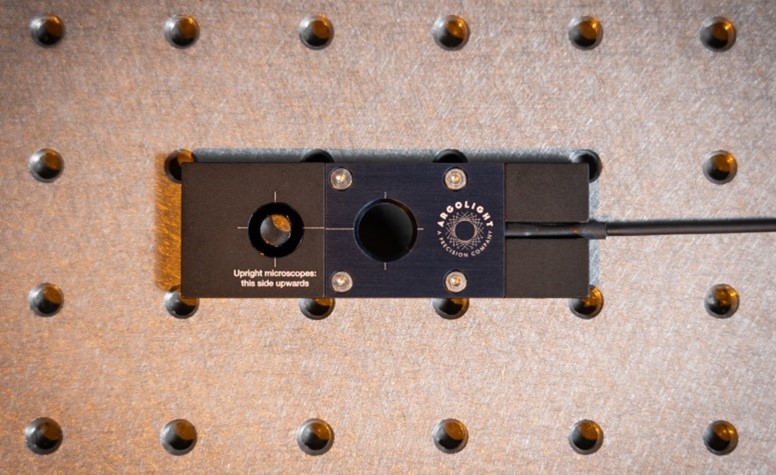
Argo-POWER V2 – recto
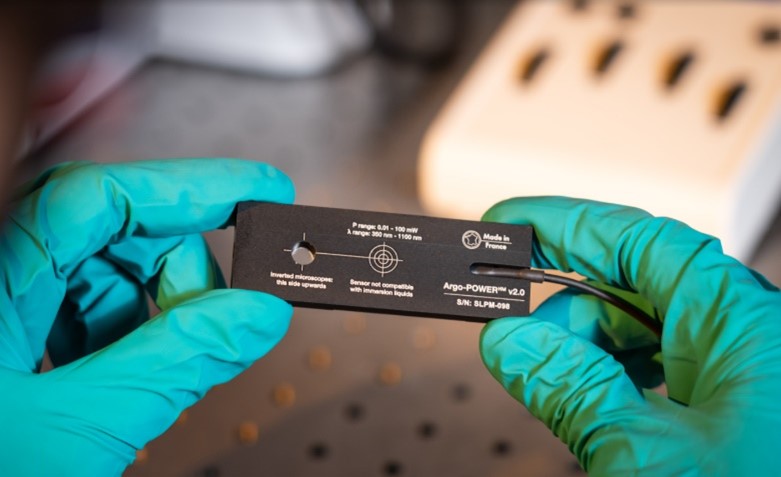
Argo-POWER V2 – verso
Transport case
To protect at best your quality control device, it still comes with its own foam padded hard case, that can be easily carried around from one microscope to another.
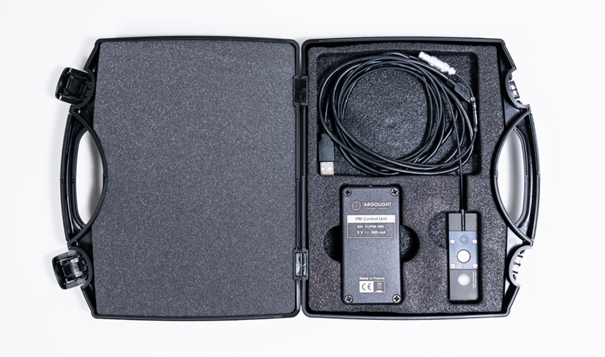
Argo-POWER V2 – foam padded hard case for transport
More comfort of use, from small handling details to a great intensity improvement: the second generation of Argolight Power meter range has been thought with users and designed for users.
If you wish to share your feedback too, or suggest improvements, you can write at customer@argolight.com.
Related terms: illumination power, live irradiance, power fluctuations, power-meter, power for biological applications, power instructions
Header photo by Argolight
User case: Kyoto University x Argolight – Fluorescent proteins observation
Matsuda Lab, Graduate School of Biostudies/Graduate School of Medicine, Kyoto University Introducing Argolight slides - A New Quality Control...
Quality control of HCS-HTS fluorescence imaging systems
In the landscape of high-content screening (HCS) and high-throughput screening (HTS) fluorescence imaging systems, precision and reliability take...
Precision Partners: Innopsys and Argolight on the InnoQuant Slide Scanners
In the intricate realm of pathology, drug discovery, and advanced research in brain function, cancer, and stem cells, the role of slide scanners has...

